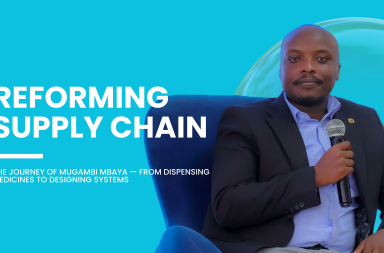Most “objections” aren’t attacks. They’re invitations. When a healthcare professional (HCP) pushes back, they’re really asking, “Show me why this matters for my patients, in my context.”
The mistake is treating objections like debates to win, instead of problems to understand and solve within ethical guardrails.
Here’s a simple, teachable, audit-proof structure you can coach across any team – PACE.
P – Pause & Listen
Give the HCP the floor.
Don’t interrupt, don’t pre-load your answer, and don’t race to defend the brand. Capture the exact words and the emotion behind them. Then acknowledge and encourage: “Thanks for raising that -could you tell me a little more?”
As they talk, identify the category of concern – clinical (efficacy or safety), practical (price, stock, adherence), preference (habits, familiarity), or policy (guidelines, formulary).
You earn trust by showing you heard the real issue, not the one you assumed.
A – Ask & Align
Now clarify the “why” behind the objection.
Good questions narrow the problem without sounding like cross-examination – “Is your main concern the incidence of X, or the effect on adherence?” or “Is it the out-of-pocket cost, or availability through your usual distributor?”
Mirror back what you heard – “So the key issue is affordability for SHIF patients – did I get that right?”
That nod is your green light to respond.
C – Cite & Compare (with balance)
Bring evidence, not emotion – and keep it compliant.
Stay within approved claims (PPB-approved materials and the SmPC), present a fair balance by stating strengths and relevant limitations, and use absolute numbers tied to outcomes that matter.
Avoid hype language and negative comparisons that drift into disparagement. If the discussion veers off-label, acknowledge the boundary and route to Medical – “That’s best handled by our medical team; I can request a medical information response.”
E – Ensure Next Step & Document
Close the loop with a clear, practical action.
Offer an approved summary, a CME invite, access-program details, or a distributor contact – then put a time on your follow-up – “I’ll share the approved safety brief today and update you on stock by Friday. Does that work?”
Capture the objection and the agreed action in your CRM. If you’ve heard anything that could be a suspected adverse event, trigger your pharmacovigilance process immediately and document per SOP.
How it Sounds in Real Conversations
“Your brand is more expensive.”
You might say: “Is the concern the patient’s out-of-pocket cost, or your facility’s tender pricing?”
Once aligned, respond within label: “In the approved data, patients in [profile] may benefit from [specific, supported outcome]. When we look at cost per day versus total course, here’s how it plays out.”
Then offer a concrete next step: “I can send the price ladder we use with pharmacies and outline compliant patient-support options.”
“I’m worried about side effects.”
Try: “Which adverse effect is most top of mind?”
Then cite: “Per the SmPC, the incidence of [AE] was X% in [study], typically early and mild, with the recommended monitoring being…”
Close with: “I’ll leave the approved safety summary and can arrange a short medical Q&A if you’d like to go deeper.”
“Guidelines favour the competitor.”
Start with scope: “Are you referring to the latest [association] guidance for [population]?”
Then balance: “The guideline positions [class/agent] here. Our label supports use in [indicated subset].
For patients with [profile], the evidence shows…”
Offer a tidy next step: “I’ll send the approved guideline summary and an invite to a case-based session next week.”
“No stock at my pharmacy/hospital.”
Keep it operational: “Which supplier do you prefer to order from?”
Then move to action: “I’ll coordinate with Distributor X today and share the PO process. Can we target delivery ahead of your next clinic day?”
“I need more evidence.”
Frame the need: “Are you looking for head-to-head data, real-world outcomes, or safety in [sub-population]?”
Then cite within approval: “In our approved materials, this meta-analysis shows [outcome], with limitations including [X].” Close the loop: “I’ll request a medical information letter on that exact topic and send you a CME invite.”
What “ethical” Looks like in the Room
Ethical objection handling means using only approved materials, answering strictly within the product label, and keeping comparisons balanced and contextual. It means watching your language – “shown to” when supported beats “better” – and avoiding any claims that haven’t passed Medical/Legal/Regulatory review.
It also means treating safety information with urgency. If you hear something that sounds like an adverse event, capture, report, and document according to your PV SOP every time.
Teaching the method – and proving it works
Turn objections into a learning asset by building an objection bank for each therapy area.
For every recurring point, keep a short approved narrative, the right leave-behind (with code and version), and the escalation path to Medical, Access, or Supply.
Rehearse PACE through short, timed role-plays: about a minute to pause and align, a minute and a half to cite with balance, and thirty seconds to agree on the next step.
Measure what matters: the proportion of calls with a documented objection and next action, the time from objection to closure, CME attendance after an objection is raised, and PV capture timeliness.
Over six to eight weeks, you should see faster cycles, tighter documentation, and fewer compliance headaches.
Think of PACE as four breaths in a conversation: pause to truly hear, ask to pinpoint, cite to clarify, ensure to move forward—and always record the journey.
Why this Approach Holds Up
HCPs value clinical clarity more than charisma. Trust grows when you demonstrate both knowledge and boundaries. And teams improve what they measure; PACE is easy to coach, inspect, and scale.
Ethical objection handling doesn’t slow you down—it makes you stronger. It transforms difficult moments into trust-building, action-oriented conversations that move the HCP, the patient, and the brand forward.


